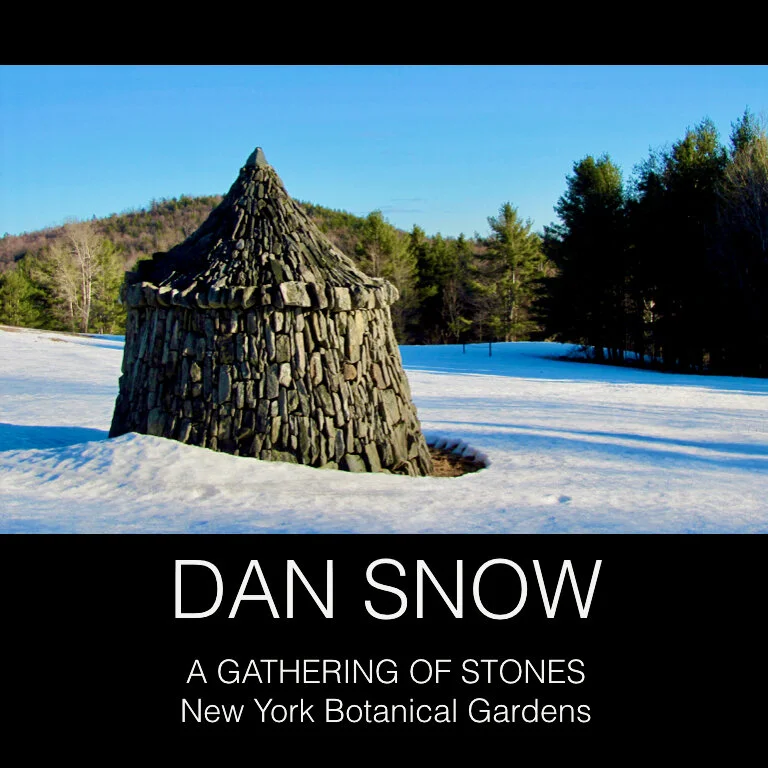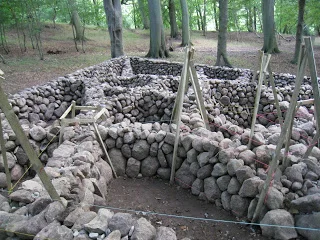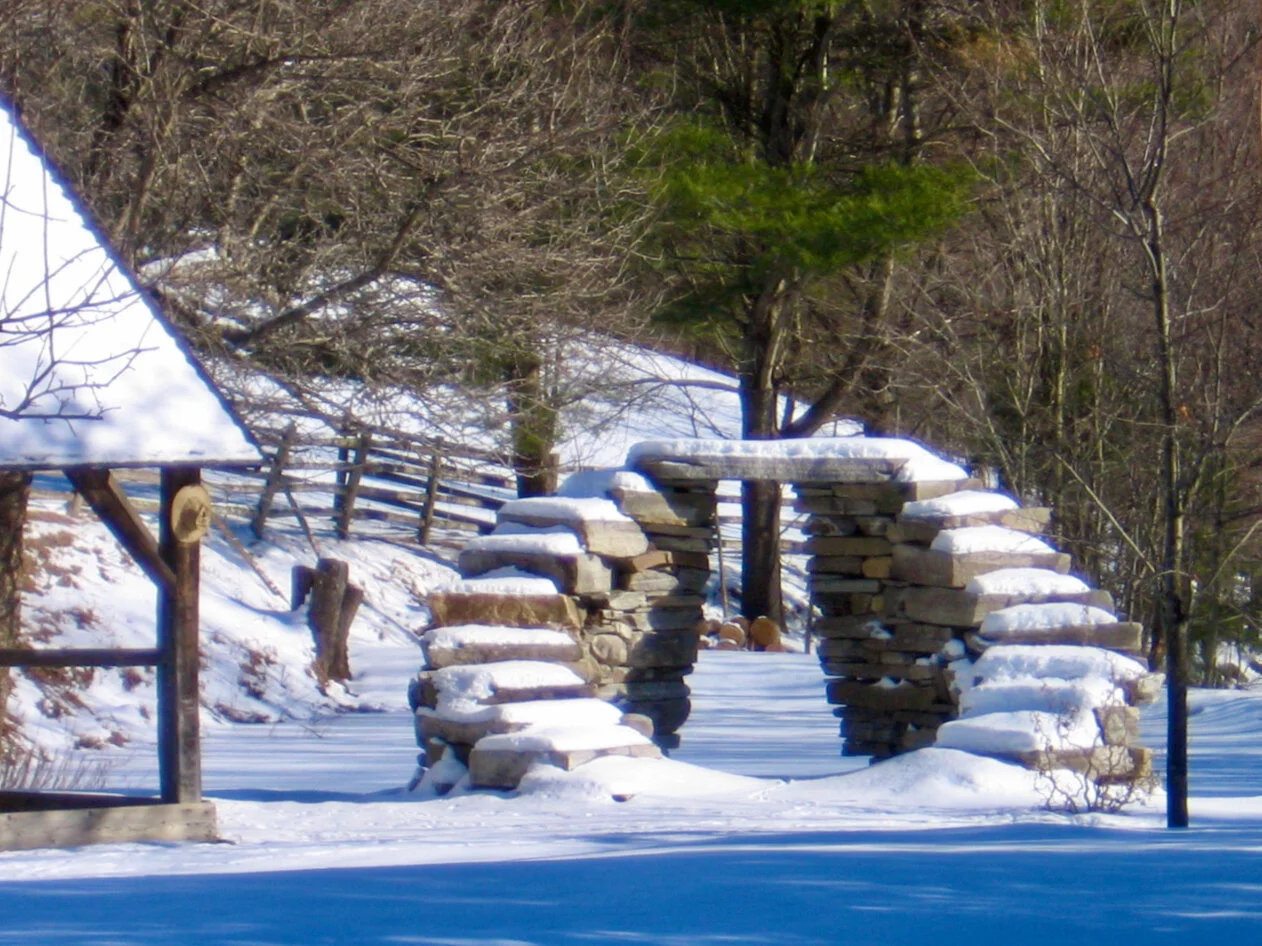Besides being an advocate for the plant kingdom, New York Botanical Garden offers programs in horticulture, education, and science. It’s grown and managed a 250-acre garden in the heart of New York City for 128 years. Being an advocate of the mineral kingdom, I was delighted to be invited to speak on behalf of rocks at such an august institution.
Read MoreLongevity self-validates. Just to have lasted decades in an occupation brings with it a certain degree of credibility. A reputation develops around what’s been done. The integrity of the stoneworker lies in their accumulated projects.
Read MoreThe subject of both talks focused on three questions: What makes sturdy dry stone constructions? Where does stone come from? Where do designs come from? In the second question, I pressed the point of seeking out alternatives to what has become the most common go-to place for stone procurement: The Home and Garden Center. I encouraged audience members to investigate six potential local resources: reclaim and reuse, quarry grout, farm dumps, gravel pits, scarified ground and loose bedrock. I suggested that by hunting for the treasures that may be laying just out of sight on the fringes of mainstream retail commerce they can reduce global environmental impact, construct works that are naturally compatible with their surroundings and keep their dollars circulating in the local economy.
Read MoreEscape to Vermont for a green day in January! Please join me and other garden enthusiasts from around the region at the historic Latchis Theater in Brattleboro for a “Garden Inspirations Workshop” on January 25, 2014. Julie Moir Messervy, Helen O’Donnell, Gordon Hayward and I will offer lively presentations with images on the big screen. All ticket proceeds will go to the Seats and Ceiling Campaign of the Latchis Theater.
Read MoreIn my presentation, I will offer a prescription for getting the most out of your building stone resources, and for performing field observations of existing dry stone structures with the aid of four key points for solid construction. The scope of the talk will range from practical advice on managing a building site to imaginative suggestions for creating stone-centric designs. The blending of greenscaping with grayscaping to foster ecological relationships, and echo historical patterns of land use, will be discussed in the session. I will offer ideas for addressing landscape erosion control issues with durable, sustainable dry stone structures.
Read MoreOver the past few months I’ve been a guest speaker and adviser to senior students in the architecture department. Their thesis project was to develop a program, and design the buildings and grounds for The Water House, a destination spa and environmental education center being built in western Massachusetts. The studio was sponsored by the New England distributor of Marvin windows, A.W. Hastings. Prizes were offered to the top three designs, judged by me and and a dozen other landscape professionals and regional architects.
Read MoreTwo days worth of indoor stone slinging last week completed the central stone feature at the Vermont Flower Show. Jared, T.J., Jamie, Brian and I finished up “Craggy Mountain” just as the trees, mulch and flowers closed in around us. On Friday I offered my slide-talk, “Working Stone,” to a standing-room-only crowd. The following words were part of the presentation’s introduction.
Read MorePoet Wendell Berry advises those who practice his craft to “make poems that don’t disturb the silence from which they come.” The same suggestion could be made to the builders of environmental art because their work is often performed in places that are already perfectly at peace. Creators of outdoor art risk disturbing an existing balance when they go to work on the land. Artists in the environment might achieve their finest work by doing nothing more than pointing out the facts of what is already there. But then again, that may be work best left to poets.
Read MoreWorking hands inform thought and awaken understanding of the art builder's place in the natural world. Undulant lines and patterned spaces are the result of many choices made by the art builder who recognizes, and utilizes, the unique character of stone. The presentation will examine the many uses of stone in art; how stone can support a design, or simply be the art itself. It will also explore the "give and take" experience of working in nature, and the connection to spirit expressed through stone.
Read MoreIt’s not every school where you can see chickens free-ranging on the lacrosse field during a practice, but Green Mountain College isn’t every school. During a recent visit to Poultney, Vermont to lecture and instruct a walling workshop at the college I discovered a vibrant educational community that’s leading the way in environmental studies. The eight students I worked with were a ready and willing group. They quickly grasped the concepts and principles of dry stone wall construction and jumped right into building. By the end of the afternoon they had laid up a 24 foot long section of retaining wall using slate cut-offs from a local quarry/fabricator.
Read MoreCultivated land is a handmade environment. Over the past two centuries, the rural face of Vermont has been shaped by farm life. While the stone walls built during that time have lost their stature as livestock fences, their presence has become a defining characteristic of the land. A dry laid stone wall, that has stood the test of time, is praised for its practicality, durability and craftsmanship. The close attention farmers pay to their surroundings is comparable to the awareness artists bring to their work. As a medium of expression, dry stone construction is a logical choice for an artist working in the landscape.
Read MoreThe gardener's perspective is the perfect loci for seeking inward and reaching outward, for ordering the experience of time and space, and observing higher orders. Garden makers and stone workers channel the power of nature through their imagination where it is interpreted and transformed through action.
Read MoreThis Thursday I will be at New England Grows! in Boston to present Artscaping: Design and Installation of Land-made Sculpture. The talk will be accompanied by slides detailing the process of identifying the artistic possibilities of outdoor space. Case studies of built works, from conception in 3-D scale models to finished installations, will be highlighted. For those looking to move their landscape horizons beyond the next hill, please join me for this entertaining and thought provoking presentation.
Read More











